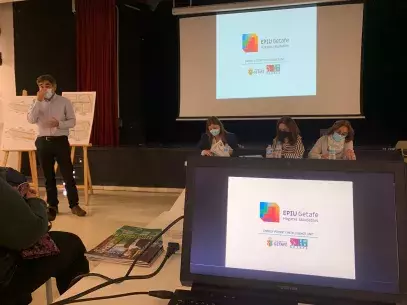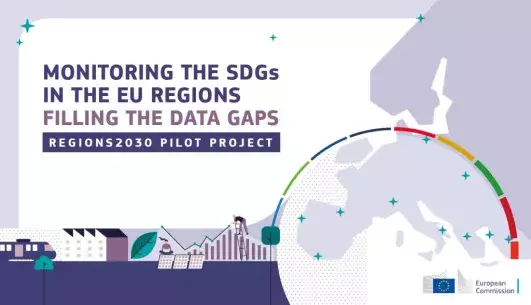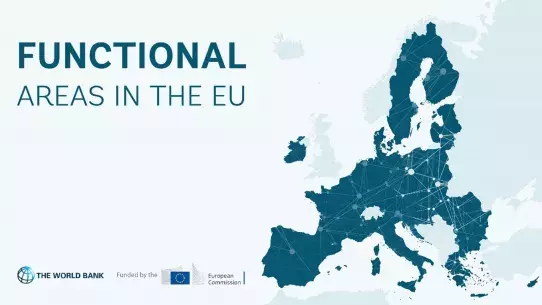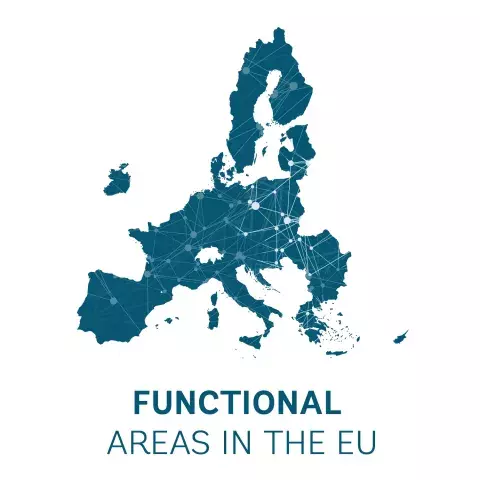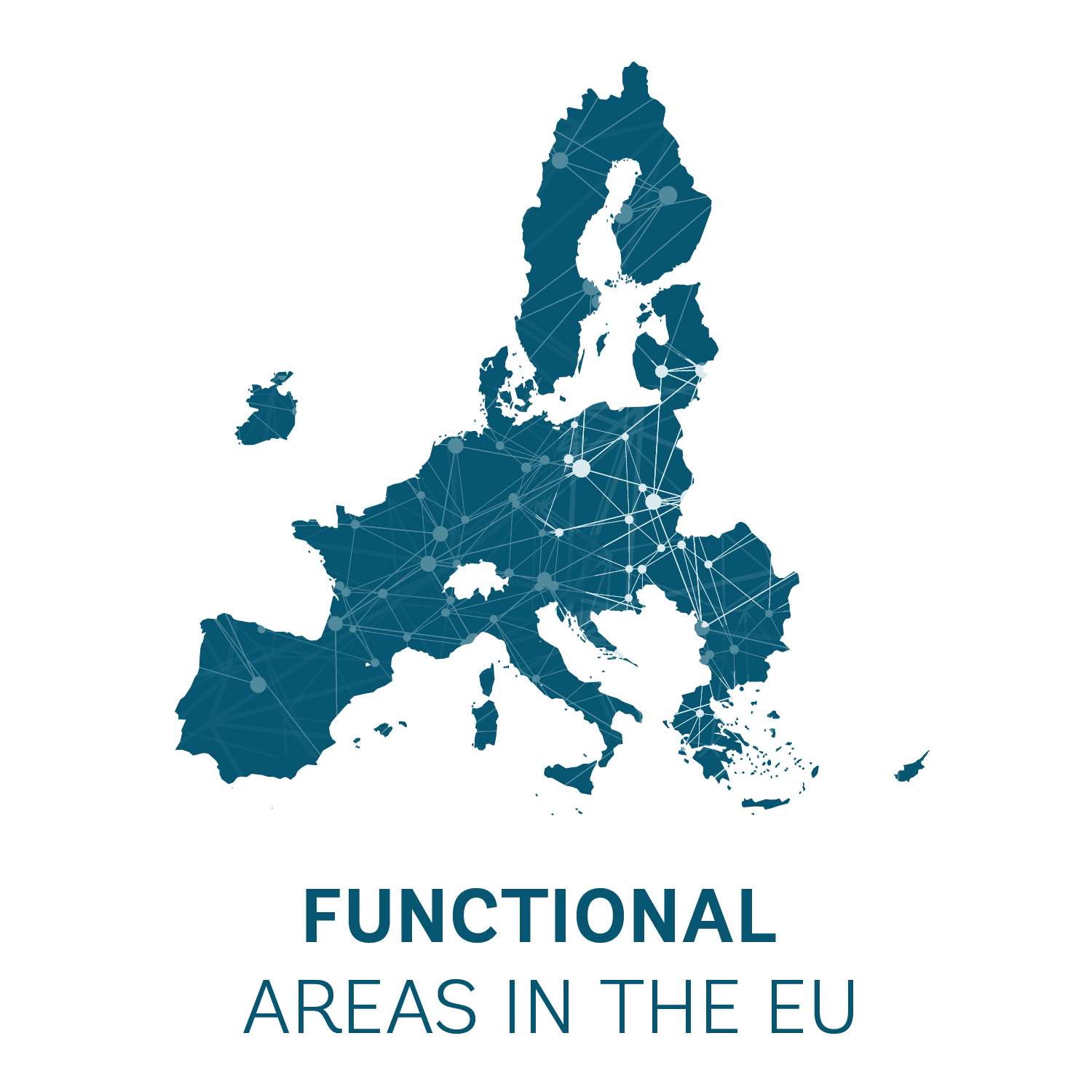
GOVERNANCE ChallengeThe Oradea Metropolitan Area has overtaken the elaboration of feasibility studies and technical projects for various investments to accelerate the implementation of major development projects, often hindered by the limited technical and administrative, and financial capacity of the localities involved. Developing metropolitan connective infrastructure has been a priority and offers an excellent example of how interjurisdictional cooperation through partnerships can accelerate the implementation of large infrastructure projects and overcome legislative barriers. The governance challenges addressed by this solution are linked to economic and environmental ones, mainly the need to attract investments and promote a polycentric development model, while also improving air quality and reducing traffic within localities SolutionOradea Metropolitan Area is a forerunner in the development of connective infrastructure at the metropolitan scale, with a first finalized project in 2018. It consisted in building a direct road between Oradea and the neighboring locality of Santandrei, which was the first such large infrastructure project to be undertaken through a metropolitan-level entity. The financing was ensured from the local budgets of the two localities. In practice, the collaboration for the new road was possible by signing an association contract that assigned the Oradea Metropolitan Area the right to carry out public procurement procedure for the design and construction works on behalf of the two members. Through this form of assignment, the public procurement process involved a single procedure, avoiding the risk of fragmentation and the partial realization of the project. As the metropolitan area hosts 68,06% of the total employees at the county level and more than than 15% of the employed population of the 11 surrounding localities commutes to Oradea, there is a growing pressure on the main access road around the core city. According to traffic flow studies, most of the two-way traffic flows in Bihor County are concentrated in the Oradea Metropolitan Area, on the relationship to and from Cluj-Napoca (Osorhei), Beius (Sanmartin) and to and from Hungary (Bors). This has prompted the need for efficient connective infrastructure to minimize commuting times and also reduce pollution. In this context, the metropolitan association has taken over the elaboration of feasibility studies and technical projects for major infrastructure projects, such as ring roads, direct roads and bike lanes. As of 2022, national financing was secured for the development of a 17 km ring road system (“metropolitan ring”) in the southern part of Oradea, which will cross the communes of Nojorid, Sânmartin and Oșorhei. Following the classification of the three ring roads as county roads in 2021, the project management has been taken over by the Bihor County Council. The ring roads will be built in partnership with the three town halls of the communes involved and will solve the traffic in the metropolitan area of Oradea on a radius of 20-30 kilometers, offering alternative routes to avoid entering the core city and ensure efficient metropolitan mobility. The metropolitan ring system is complemented by other projects for building new ring roads and connecting roads in the MA (Biharia, Osorhei, Santandrei and Sanmartin ring roads, connecting roads to Nojorid, Paleu) and a 19 km direct road to the A3 highway, already under construction. Key benefits: efficient connectivity reduced traffic in the core city and its proximity reduced traffic in the metropolitan localities due to ring roads reduced commuting times opportunity for the construction of adjacent bike lanes along the new roads. For the new metropolitan ring, a new IDA – Intercommunity Development Association was founded between the municipality of Oradea and the County Council and further partnership agreements were signed with the three localities involved. This is not the only case when a new IDA was formed – whenever available financing is identified, the team also decides on the most efficient way to apply, meaning that sometimes, especially for large projects, a separate IDA formed only from the beneficiaries of the project is created. In most other cases, however, an association agreement was signed between the Bihor County Council (whenever the project involved segments classified as county roads), Oradea City Hall, Oradea Metropolitan Area and the localities involved in the project. Partnerships with the National Road Infrastructure Management Company were also established, as in the case of the ring road of Sanmartin, the largest commune in the MA. The partnership with the National Road authority is part of a proactive approach to accelerate the implementation of key infrastructure projects, based on the new enabling legislative context. Since 2020, local authorities can take over the preparation and implementation of projects from the National Company for Road Infrastructure Management (CNAIR) in order to counter the risk of losing EU money due to the slow pace of project implementation. As such, the Metropolitan IDA has taken over the preparation process for the construction of the direct road connecting Oradea to the A3 highway, elaborating the feasiblity study and financing request, so that CNAIR could apply for EU funding. Moreover, the IDA also handles the necessary expropriations and ensures the mediation with the owners. Similarly, at a larger scale, the Oradea-Arad Express Road offers a best practice example through the proactive involvement of the local authorities and impactful inter-jurisdictional cooperation. The implementation partnership agreement involved Oradea municipality, Bihor county, Arad municipality, Arad county and the National Company for Road Infrastructure Management (CNAIR). A separate association agreement was signed between the four local and county-level partners. This express road will be connected to the A1 and A3 motorways and will foster regional and metropolitan development, benefitting from financing through the Transport OP 2021-2027. In terms of financing, one of the key assets of the Oradea Metropolitan Area is the capacity to mobilize local funds for investments, as many of the new roads are financed through the local budgets of the Oradea City Hall and the partnering localities. Whenever possible, national and EU funding was accessed to fund major investments, such as the Metropolitan Ring and the direct road to the A3 highway. Extra tip: When it comes to expropriations, sub-evaluations are a key challenge, prompting owners to go to court. These sub-evaluations are due to the fact that according to the national law on expropriations for public utility (Law 255/2010), the price needs to be evaluated according to the notarial grid, and not the market value. As many of the sales occurring through the notarial offices are often declared at a lower value by the counterparts, this affects the evaluation of private assets when it comes to expropriations. As a result, owners go to court, objecting to the evaluated price of their property. To ensure a better planning of the budget for expropriations, the metropolitan IDA also takes these differences into account. Videos: Oradea-Santandrei road: https://www.youtube.com/watch?v=peJvmhVNUpw&ab_channel=FlorinBirta Other best practices Tourism, culture and brandingHarnessing the Untapped Potential: The All-Season Tourism Masterplan for Jiu ValleyJiu Valley & Jiu ConurbationContinue reading Best Practices | Urban regenerationUrban-rural linkages: regeneration of public spaces in the Cluj Metropolitan AreaCluj-Napoca Metropolitan AreaContinue reading Governance | Strategic planningIntegrated Development Strategy of Brno Metropolitan AreaBrno Metropolitan AreaContinue reading 12Next
About this resource
In 2021, the European Commission launched a pilot project to improve functional area approaches in the EU and has partnered with the World Bank to implement this initiative. As part of the project, the project team collaborated with 12 functional areas from seven EU countries, providing them with tailored technical support and assistance: Zagreb Urban Agglomeration (Croatia), Brno Metropolitan Area (Czech Republic), West Athens (Greece), Lake Balaton Area (Hungary), Kalisz-Ostrów Agglomeration, Kraków Metropolitan Area (Poland), Jiu Valley and Jiu Conurbation Functional Area, Caraș-Timiș Functional Area, Cluj Metropolitan Area, Oradea Metropolitan Area, West Ialomița Functional Area (Romania), and Trenčín Functional Area (Slovakia).
Similar content
